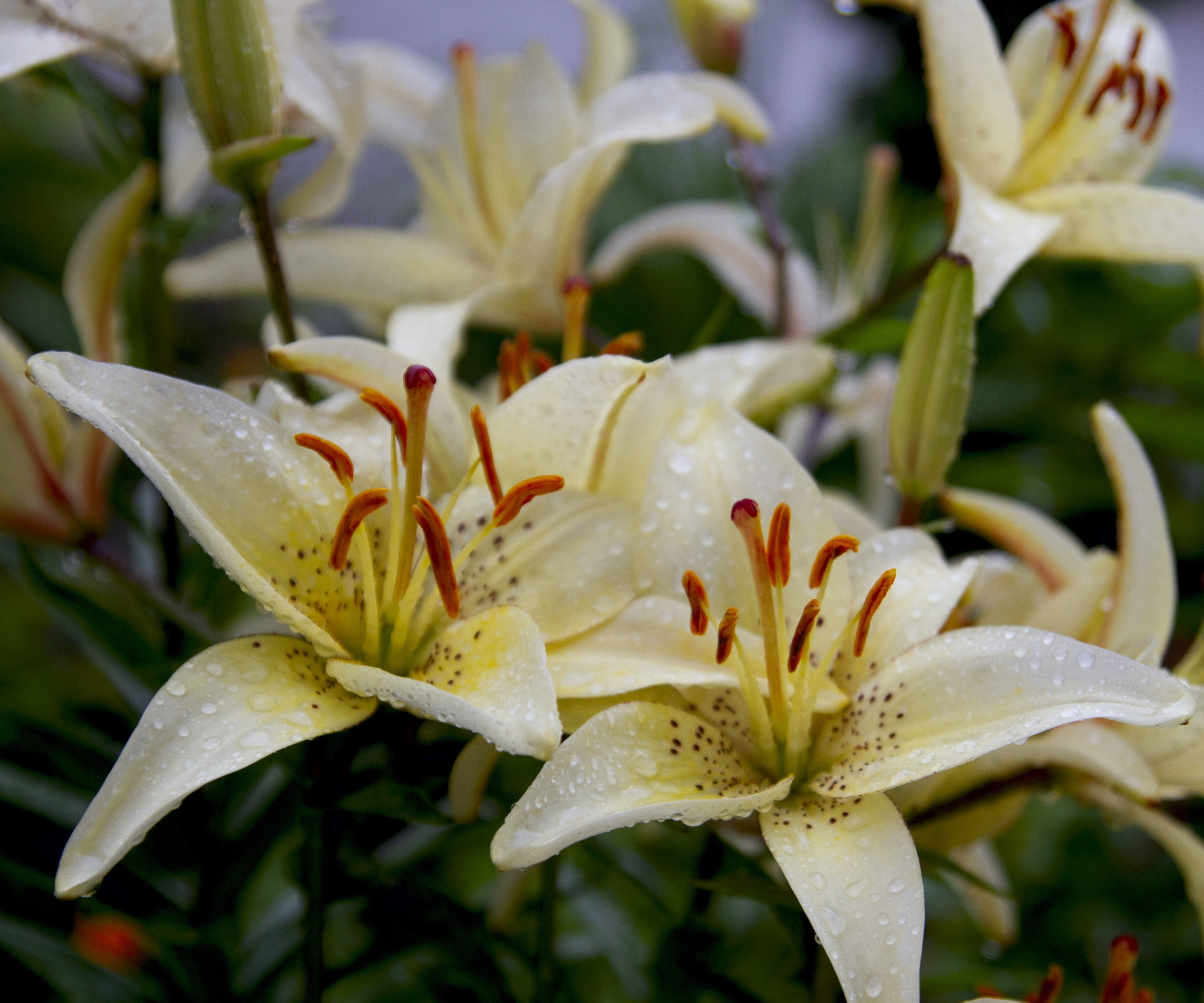Fertilizing lilies is a vital summer task – to guarantee even more blooms next year
Discover how to fertilize lilies for healthy plants with prolific blooms


Lilies are showstopping bulbous plants, celebrated for producing large star-like or trumpet-shaped blooms that tend to have a heady fragrance. Whether grown in pots or borders, enjoying the perfume of a lily plant on a late summer evening is enchanting.
As a professional gardener, I have grown lilies in many different places where I have worked. I have mostly grown them in pots. This is useful as containers can be positioned within borders and beds, almost like a temporary installation to be removed once flowering is finished. This trick can help to add interest and variation to garden borders throughout the year.
When considering how to care for these striking plants, learning how to deadhead lilies is important, but so too is knowing how to fertilize lilies. Here, one garden expert shares all the information you need to give these summer bulbs a boost.

When and how to fertilize lilies
Two of the most common true lilies are Oriental lilies,Lilium oriental, and Asiatic lilies, Lilium asiatica, both of which are popular plants for their colorful, impactful blooms.
While it will be dependent on the species you grow, most lilies grow best in US hardiness zones 4 to 9. Whatever the species and whatever the hardiness zone, lilies are known to be hungry plants, benefitting from a regular application of fertilizer throughout the growing season.
When to fertilize lilies

'Lilies are hungry plants, requiring plenty of nutrients to produce dozens of large, colorful blooms,' says Sam Niemann, garden expert and founder of Grown by Design, a boutique landscape design firm based in San Diego.
'I recommend fertilizing lilies consistently throughout the growing season,' Sam says. 'Starting in spring, feed your lilies regularly all the way through until fall.'
Design expertise in your inbox – from inspiring decorating ideas and beautiful celebrity homes to practical gardening advice and shopping round-ups.
One common fertilizing mistake is insufficient or irregular feeding, so, for the best results, be sure to stick to a schedule, feeding the right amount at consistent intervals. Sam continues: 'This applies to both lilies in borders and lilies in pots - all plants will benefit from a good dose of feed.'
As summer bulbs, these plants need nourishment to produce a bounty of blooms, but also to prepare for winter dormancy, so be sure to add this important job to your summer gardening checklist. The trick is knowing the right type of fertilizer to use, which is covered below.

Sam is a lifelong gardener whose passion for plants and nature has been the driving force behind his extensive knowledge and expertise in horticulture. He studied at San Diego State University, earning a degree in Finance while simultaneously founding Grown by Design, a boutique landscape design firm.
How to fertilize lilies

When planting lily bulbs, it is a good idea to combine some good quality organic potting soil, available from Walmart, which will help to give your bulb the best start early in the year. This applies to both lily bulbs in borders and containers.
From spring, you can feed every two weeks. 'I prefer to use a liquid fertilizer every 10 to 14 days,' Sam adds. 'Be sure to follow the instructions on the fertilizer packaging, diluting in water as required.'
From early to mid-spring, it is best to use a general-purpose fertilizer, such as this organic balanced fertilizer, available from Walmart. In terms of plant fertilizer numbers, the nitrogen, phosphorous, and potassium (or potash) values should all be equal, such as 4-4-4 or 10-10-10.
From summer, I recommend switching fertilizer and using a feed that is high in phosphorus and potassium. This will aid flower production and support the bulb as it prepares for winter dormancy, only to return next year. There are many suitable feeds, such as this organic tomato fertilizer, available from Walmart. The trick is to look for a formula with higher second and third values, such as 3-5-5.
Stop fertilizing your bulbs towards the end of summer, usually around late September. Allow the foliage to soak up as much sun as possible before you cut back and store your bulbs for winter. By sticking to a regular feeding schedule, you will give your lily plants the best chance of success to return and bloom once again next year.
FAQs
Does mulching help to feed lilies that are planted in borders?
In mild regions, such as US hardiness zone 9, lily bulbs can be left in the ground and will survive the fall and winter. 'For these bulbs, I recommend applying a thick layer of bark mulch in November,' says Sam Niemann, garden expert and founder of Grown by Design, 'which will help to feed and protect your lilies through the winter.'
Knowing how to fertilize lilies is important, and regular feeding through the spring and summer will ensure that your plants return next year. For more lily care and growing information, see our guide on easter lily care, to fill your yard with even more wonderful flowers.

Thomas is a Content Editor within the Gardens Team at Homes and Gardens. He has worked as a professional gardener for both public spaces and private estates, specializing in productive gardening, growing food and flowers. Trained in Horticulture at the Garden Museum, he has written on gardening and garden history for various publications, including The English Garden, Gardens Illustrated, Hortus, The London Gardener and Bloom. He has co-authored a Lonely Planet travel book, The Tree Atlas, due out in 2024.
